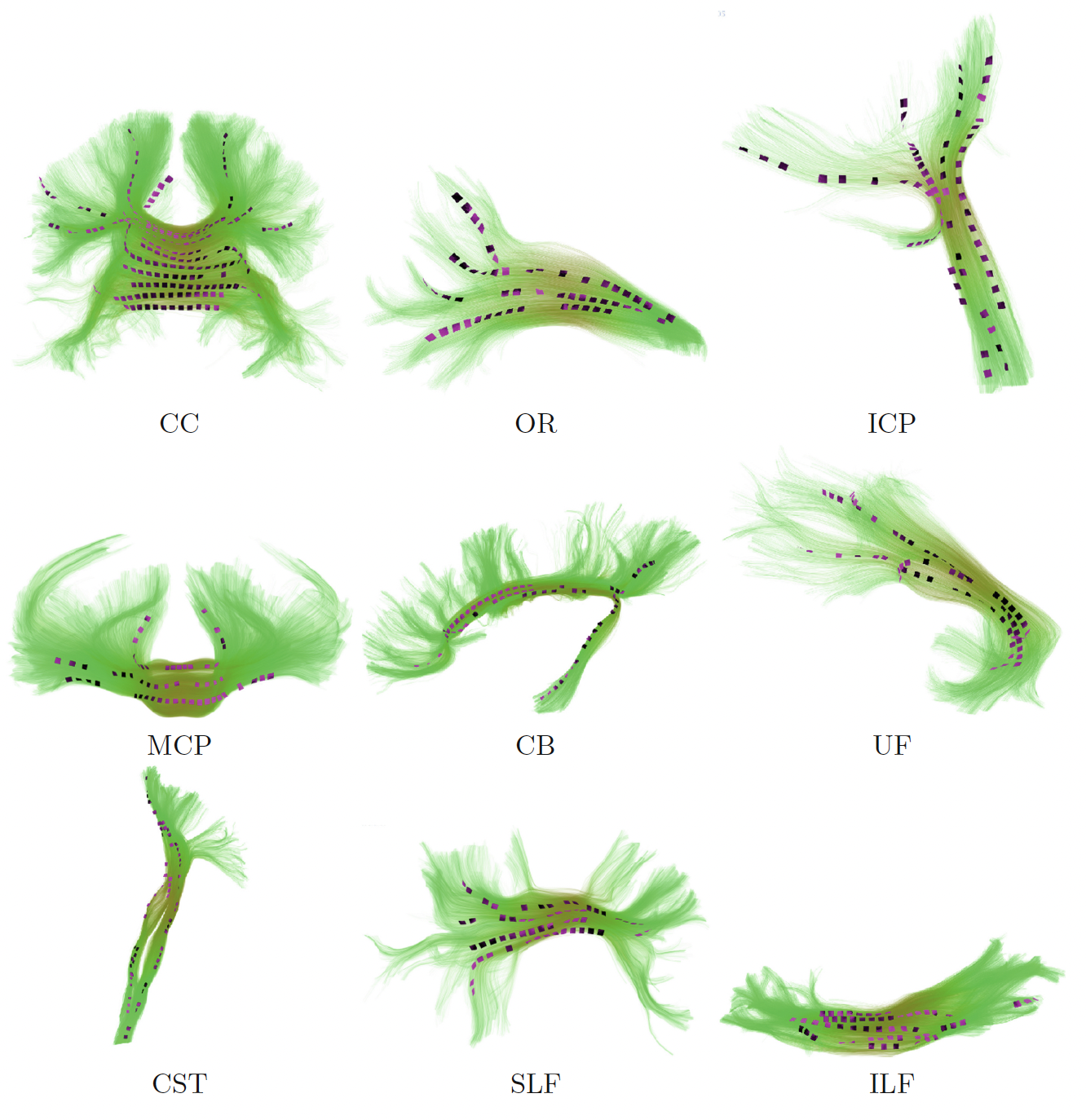Minimizing Non-holonomicity: Finding Sheets in Fibrous Structures

Figure:Tract systems from an Human Connectome Project (HCP) atlas are shown with green streamlines, with the estimated sheets (where present) shown as magenta surfaces
Oriented elements compose fibrous structures in biological tissue, and their geometry plays an important role in organ function. In the heart, for example, myocytes are stacked end on end in a particular fashion to facilitate electrical conductivity and efficient mechanical contraction. In the brain, white matter fiber tracts are neuro-anatomically partitioned into specific bundles which connect distinct brain regions. In both cases, the local geometry has been qualitatively described as being sheet-like in particular regimes. Yet, to date, few if any quantitative methods exist for finding these sheets from imaging data. We have been developing a computational solution to this problem, motivated by the property that a holonomic vector field is locally normal to a family of smooth surfaces. We propose an algorithm which, given an input vector field, finds a second one with which it best spans a sheet-like structure locally, by minimizing non-holonomicity. We provide high quality sheet reconstructions from both heart wall DTI data and labeled tracts in the human brain, along with a sheet likeliness measure. Whereas sheet-like geometries have been described qualitatively in past literature, ours is the first method to provide a reconstruction of them from a single direction field.
See publication online here
